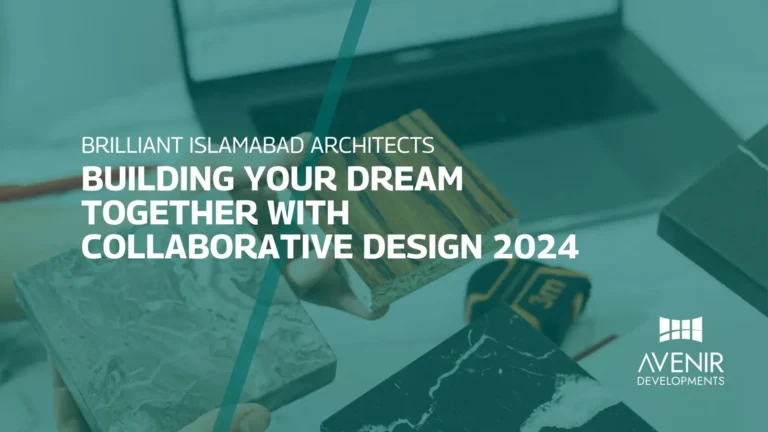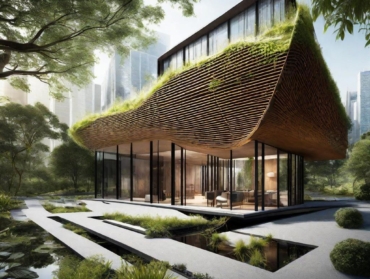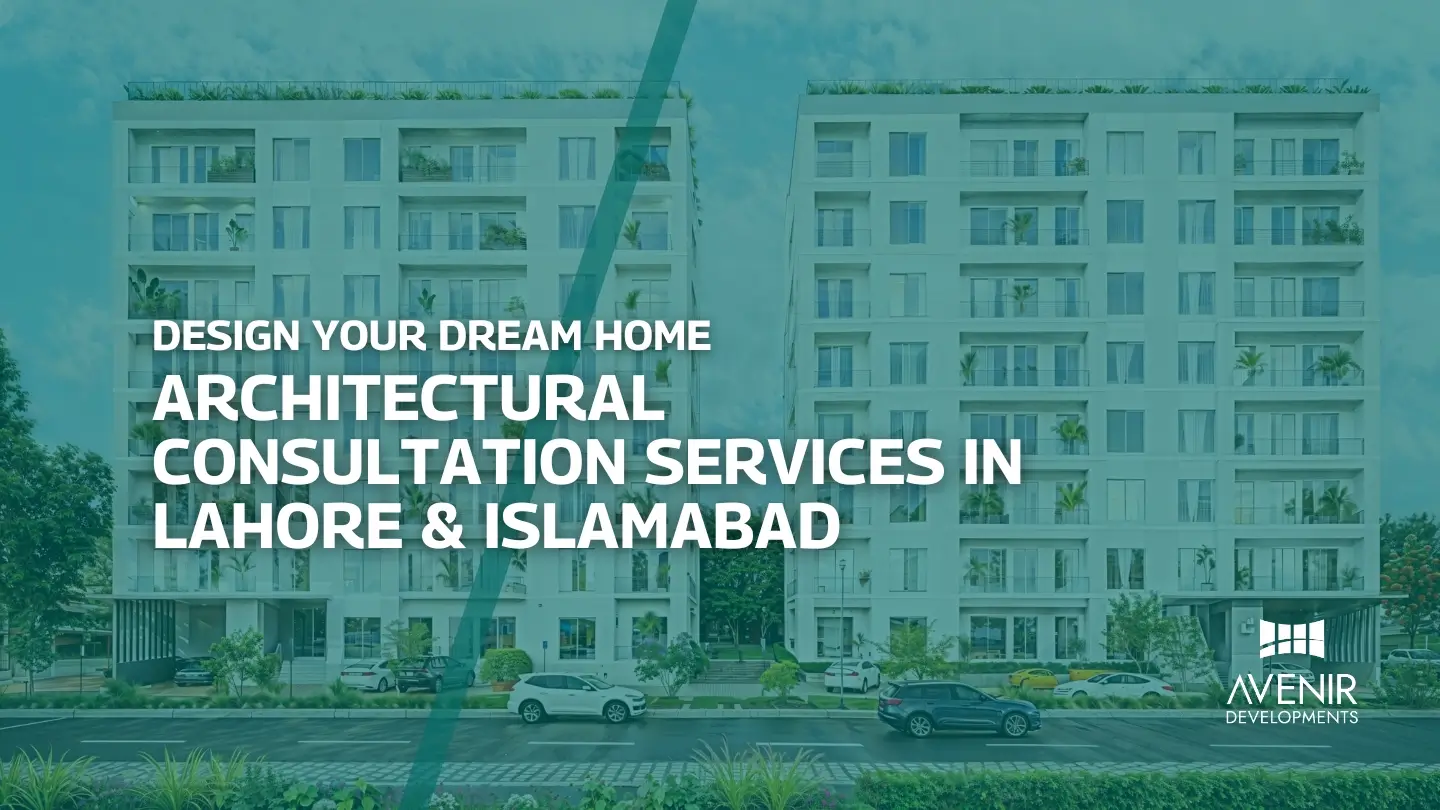For years, I’ve had the privilege of working as an architect in some of the most dynamic cities globally. From bustling London to the sun-drenched shores of Australia, each project presented unique challenges and opportunities. But one constant remained: the desire of every client to see their vision brought to life. Here in Islamabad, with its rich history and vibrant culture, this desire is even more pronounced.
This is where Islamabad architects who embrace a collaborative design approach come in. We understand that your dream home or commercial space is more than just bricks and mortar; it’s a reflection of your personality, needs, and aspirations. By working closely with you throughout the entire design process, we can ensure that the final product exceeds your expectations.
In this blog post, we’ll delve into the world of collaborative architecture and its benefits. We’ll explore the latest trends in Islamabad and beyond, answer frequently asked questions, and share valuable tips to guide you on your building journey. Whether you’re a seasoned homeowner or a first-time builder, this post is for you.
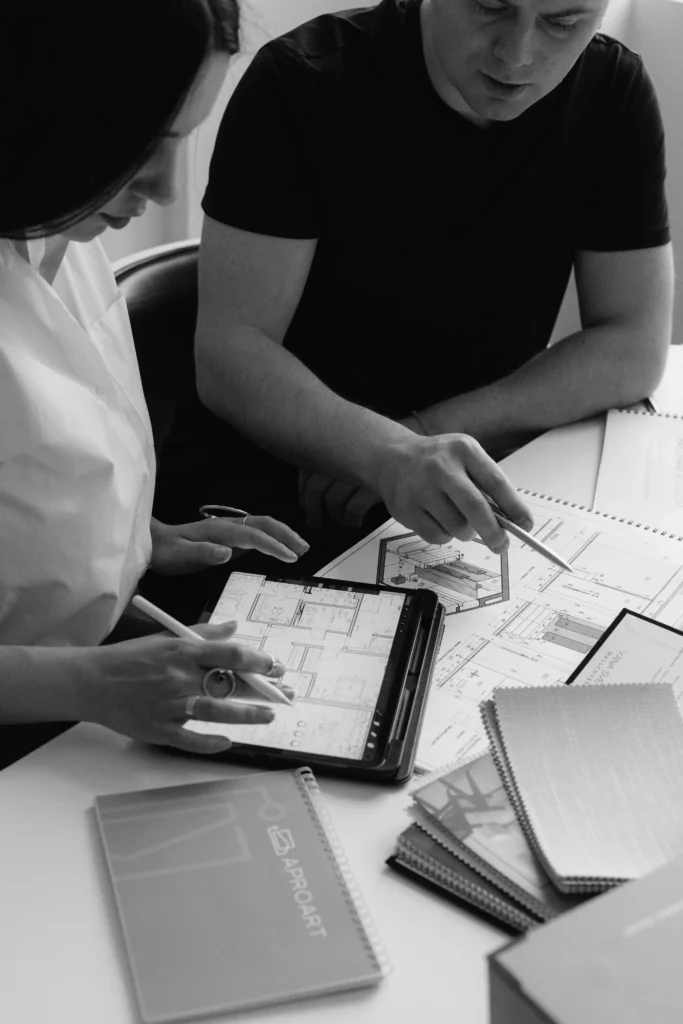
Islamabad Architects Collaborative Design: A Symphony of Ideas
Collaborative design isn’t a new concept, but its principles are more relevant than ever in today’s fast-paced world. Here, we’ll unpack what it means and explore its historical context to showcase its evolving importance.
What is Collaborative Design?
Collaborative design isn’t just a fancy term; it’s a philosophy that prioritizes open communication and teamwork throughout the entire architectural process. Imagine a symphony orchestra – each instrument (architect, client, contractor, engineer) plays a crucial role, but it’s the conductor (collaborative design) who harmonizes these diverse voices into a cohesive and beautiful masterpiece: your dream space.
Why is Collaborative Design Important?
Traditionally, architecture followed a more hierarchical model where the architect held the primary creative vision. While this approach has produced iconic structures, it often resulted in buildings that didn’t fully resonate with the occupants.
Collaborative design offers a refreshing alternative, fostering several compelling benefits:
- Client Satisfaction: By involving clients throughout the design process, architects gain a deeper understanding of their vision, lifestyle, and budget constraints. This leads to a higher level of satisfaction and a space that truly feels like “home.”
- Improved Functionality: Open communication allows architects to understand how clients intend to use the space. This ensures a more functional design that caters to their specific needs.
- Enhanced Sustainability: Collaborative design encourages the integration of sustainable practices into the building process. Clients can voice their concerns about energy efficiency, resource conservation, and environmentally friendly materials.
- Reduced Risk of Errors: Open communication helps identify and address potential issues early on, saving time, money, and minimizing costly mistakes during construction.
Examples of Collaborative Design in Action:
Collaborative design can be applied to projects of all sizes and scales. Here are a few examples in Islamabad and beyond:
- Community Centers: Involving community members in the design fosters a sense of ownership and ensures the space reflects their needs.
- Office Buildings: By working collaboratively with employees, architects can design office spaces that promote productivity, collaboration, and well-being.
- Schools: Collaborative design with educators and parents can create learning environments that are conducive to effective teaching and student engagement.
- Historical Revitalization: Architects can work with residents and stakeholders to preserve a building’s heritage while enhancing its functionality and accessibility for future generations.
A Historical Perspective:
Traditionally, architecture followed a more hierarchical model. The architect held the primary creative vision, and clients were expected to defer to their expertise. While this approach has produced some iconic structures, it often resulted in buildings that didn’t fully meet the needs or desires of the occupants.
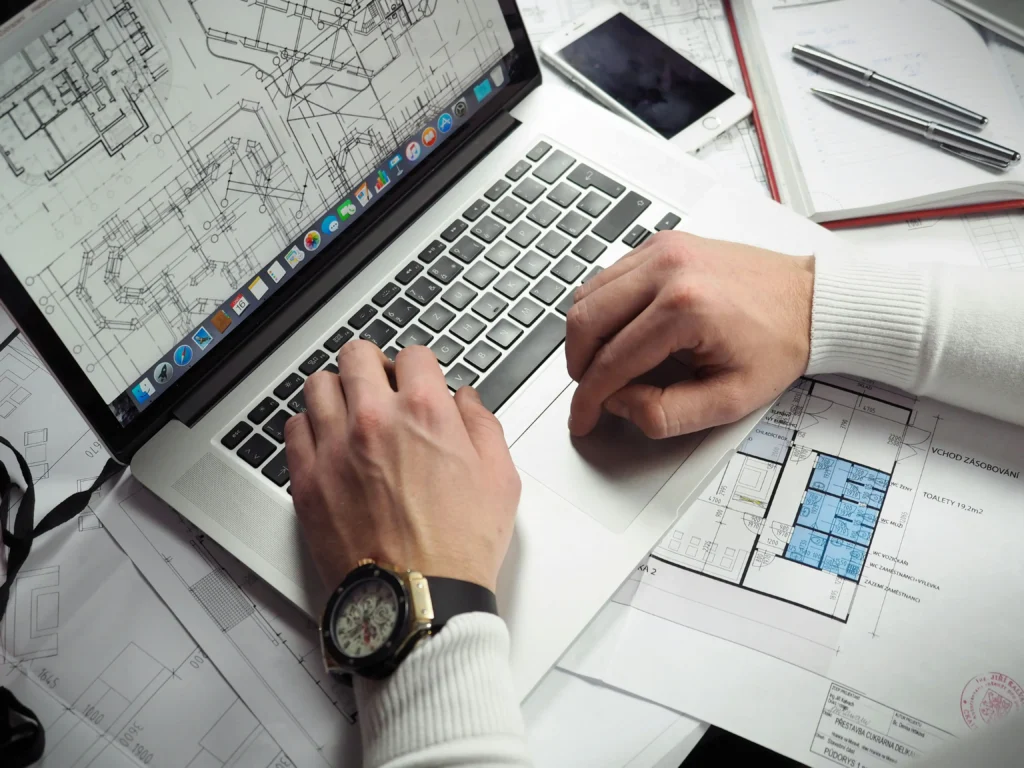
The rise of collaborative design can be traced back to the mid-20th century, with architects like Christopher Alexander advocating for user participation and a more democratic design process. Today, this philosophy is gaining wider acceptance, driven by a growing emphasis on sustainability, functionality, and user experience in architecture.
Why is Collaborative Design Important?
There are several compelling reasons why collaborative design has become the cornerstone of modern architecture:
- Client Satisfaction: Collaborative design ensures that the final product reflects the client’s unique needs and preferences. By actively involving clients in the design process, architects can gain a deeper understanding of their vision, lifestyle, and budget constraints. This leads to a higher level of client satisfaction and a space that truly feels like “home.”
- Improved Functionality: Through open communication, architects can better understand how clients intend to use the space. This allows for a more functional design that caters to their specific needs. For instance, during the collaborative design process for a family home, discussions might reveal the need for a dedicated playroom or a home office space.
- Enhanced Sustainability: Collaborative design encourages the integration of sustainable practices into the building process. Clients can voice their concerns about energy efficiency, resource conservation, and environmentally friendly materials. This can lead to the creation of buildings that are not only beautiful but also responsible stewards of the environment.
- Reduced Risk of Errors: Open communication throughout the design process helps to identify and address potential issues early on. This not only saves time and money but also minimizes the risk of costly mistakes during construction.
Examples of Collaborative Design in Action:
Collaborative design can be applied to projects of all sizes and scales. Here are a few examples:
- Community Centers: Involving community members in the design of a community center ensures that the space caters to their diverse needs and fosters a sense of ownership.
- Office Buildings: By working collaboratively with employees, architects can design office spaces that promote productivity, collaboration, and well-being.
- Schools: Collaborative design with educators and parents can create learning environments that are conducive to effective teaching and student engagement.
By embracing collaborative design, Islamabad architects are fostering a more inclusive and sustainable approach to building a vibrant and thriving city for the future.
In the next section, we’ll explore the latest trends in collaborative design in Islamabad and beyond.
Collaborative Design Trends in Islamabad and Beyond
The architectural landscape of Islamabad is constantly evolving, and collaborative design is at the forefront of this change. Here, we’ll delve into some of the hottest trends shaping collaborative architecture in Islamabad and internationally:
Islamabad-Specific Trends:
- Technology Integration: Islamabad architects are increasingly leveraging technology to enhance collaboration. Virtual reality (VR) tools allow clients to virtually experience their future space before construction begins. Building Information Modeling (BIM) software enables real-time project updates and facilitates communication between all stakeholders.
- Focus on Vernacular Architecture: There’s a growing appreciation for incorporating traditional design elements and local materials into new buildings. Collaborative design fosters discussions about integrating these elements while ensuring the building meets modern needs.
- Community-Driven Projects: Islamabad is witnessing a rise in community-driven projects, such as parks and public spaces. Collaborative design allows residents to have a say in the design and ensures the space caters to their specific needs.
Global Trends in Collaborative Design:
- Biophilic Design: This approach prioritizes integrating nature into the built environment. Collaborative discussions with clients can reveal their preferences for natural light, ventilation, and access to outdoor spaces.
- User-Centered Design: This trend emphasizes designing spaces that are tailored to the specific needs and behaviors of the users. Collaborative design allows architects to understand how people will interact with the space and design accordingly.
- Sustainable Materials and Practices: The growing focus on environmental responsibility is driving the use of sustainable materials and construction methods. Collaborative design allows clients to explore eco-friendly options and make informed decisions about their project.
Examples of Collaborative Design Trends in Action:
- Islamabad: A recent example is the revitalization of a historic bazaar in Islamabad. Architects worked closely with shopkeepers and residents to create a space that preserves the area’s heritage while enhancing its functionality and accessibility (Source: You can search online for news articles or project descriptions related to the bazaar revitalization project in Islamabad and link it here).
- Globally: One notable example is the Østerbro Library in Copenhagen, Denmark. The library was designed through a collaborative process involving librarians, community members, and architects. The resulting space is a vibrant hub for learning and social interaction (https://www.archdaily.com/catalog/us/products/20520/velux-modular-skylights-in-norrebro-library-velux-commercial).
By staying at the forefront of these trends, Islamabad architects are ensuring that their clients benefit from the latest advancements in collaborative design. This translates to buildings that are not only aesthetically pleasing but also functional, sustainable, and truly reflect the needs and aspirations of their occupants.
In the next section, we’ll address some of the most common questions people have about collaborative design in Islamabad.
Collaborative Design FAQs: Your Questions Answered
Collaborative design might seem like a new concept, but with its emphasis on open communication and shared vision, it’s an approach many people find appealing. Here, we address some of the most frequently asked questions about collaborative design in Islamabad:
Q: What are the benefits of collaborative design for clients?
A: Collaborative design offers numerous benefits for clients, including:
- Increased control and ownership: You have a direct say in shaping your space and ensuring it meets your specific needs.
- Improved communication and transparency: You’ll be kept informed throughout the design process and have a clear understanding of the project’s progress.
- Reduced risk of surprises: Open communication helps to identify and address potential issues early on, minimizing surprises down the line.
- Greater satisfaction with the final product: By actively participating in the design process, you’re more likely to end up with a space that truly feels like “home” or perfectly suits your business needs.
Q: Does collaborative design cost more?
A: Not necessarily. While open communication and additional meetings are part of the process, collaborative design can actually lead to cost savings. By identifying potential issues early on and ensuring everyone is on the same page, the risk of costly mistakes during construction is reduced.
Q: How much involvement will I have in the design process?
A: The level of involvement is entirely up to you! Some clients prefer a more hands-on approach, actively participating in brainstorming sessions and design decisions. Others may feel comfortable providing broad guidelines and trusting the architect’s expertise. Regardless of your preference, collaborative design ensures clear communication and keeps you informed every step of the way.
Q: What are some of the challenges of collaborative design?
A: While the benefits are numerous, collaborative design also presents some challenges:
- Time commitment: Open communication requires additional time for meetings and discussions. However, these investments usually pay off in the long run.
- Finding the right architect: Look for an architect experienced in collaborative design and comfortable working in a team environment. A good fit will understand your vision and guide you through the process.
- Compromise: Collaborative design is all about finding common ground. Be prepared to make some compromises, but a skilled architect will ensure everyone’s needs are met.
Q: How do I find an Islamabad architect who practices collaborative design?
A: Look for architects who highlight their collaborative approach on their websites or portfolios. Reading testimonials from past clients can also give you an idea of their working style. At Avenir Developments, we pride ourselves on our commitment to collaborative design. We believe in working closely with our clients to create dream spaces that exceed expectations.
Ready to embark on your collaborative design journey?
In the next section, we’ll share some expert tips to guide you on your path to creating a space that reflects your unique vision.
Expert Tips for Collaborative Design Success
Here at Avenir Developments, with over 15 years of experience working on collaborative design projects in Islamabad and around the world, we’ve accumulated valuable insights. By following these expert tips, you can ensure a smooth and successful collaborative design experience:
Define Your Vision (Before You Meet the Architect):
- Consider your needs and aspirations: What do you want to achieve with your new space? How will you use it?
- Gather inspiration: Browse magazines, websites, and Pinterest boards to create a mood board that reflects your design preferences.
- Develop a budget: Having a realistic budget in mind will guide the design process and help your architect recommend appropriate materials and finishes.
Communicate Effectively:
- Be clear and concise: Clearly articulate your needs and expectations to your architect.
- Ask questions: Don’t hesitate to ask questions throughout the design process. The more informed you are, the better equipped you’ll be to make decisions.
- Be open to feedback: Your architect will provide valuable insights and suggestions based on their expertise. Be receptive to their ideas while staying true to your vision.
Embrace Collaboration:
- Be an active participant: Don’t be afraid to share your thoughts and ideas during design meetings.
- Trust your architect: A good architect will be a valuable partner, guiding you through the process while respecting your vision.
- Celebrate milestones: Take the time to acknowledge the progress made throughout the design process. This will help maintain momentum and excitement for the final outcome.
Additional Tips:
- Consider the long-term: Think about how your needs may evolve over time and design a space that can adapt to your changing requirements.
- Invest in quality materials: While staying within budget, prioritize using high-quality materials that will stand the test of time.
- Don’t be afraid to be bold! Your home or workspace is a reflection of your personality. Embrace your unique style and incorporate elements that make you happy.
By following these tips and partnering with an experienced architect who embraces collaborative design, you can turn your dream space into a reality. Islamabad architects at Avenir Developments are here to guide you through every step of the journey.
Contact us today on WhatsApp or Call +923001101103 to schedule a consultation and discuss how we can help you create a space that reflects your unique vision and exceeds your expectations.

Conclusion: Building Your Dream Together
As you embark on your architectural journey, remember that your dream space is within reach. Collaborative design empowers you to take an active role in shaping a space that reflects your individuality and fosters a sense of well-being.
Throughout this blog post, we’ve explored the benefits of collaborative design, highlighted the latest trends in Islamabad and beyond, addressed common concerns, and shared valuable tips to ensure a successful design experience.
Here are some key takeaways to remember:
- Collaborative design fosters a true partnership between client and architect.
- Open communication is essential for ensuring everyone’s needs are met.
- Collaborative design leads to a more functional, sustainable, and satisfying final product.
At Avenir Developments, our team of Islamabad architects is passionate about collaborative design. We believe in working closely with our clients to translate their vision into reality. Whether you’re building your dream home, designing a functional workspace, or revitalizing a commercial space, we’re here to guide you every step of the way.
Are you ready to take the first step towards creating your dream space?
Contact Avenir Developments today! We offer a free consultation where you can discuss your project in detail and learn more about our collaborative design approach. Call us on +923001101103 or send us a message on WhatsApp. We look forward to partnering with you on your architectural journey!
Together, let’s build something extraordinary.
Read more: Investing in Your Future: NORA Residences Islamabad

